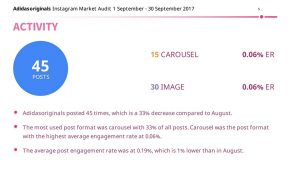How Advertisers, Publishers Are Lowering Carbon Emissions In Ad Supply Chain
Publishers and advertisers working to launch ad inventory that emits less carbon are also trying to stay within budget — requiring each company to step up and support the process.
Metaphorically, Curt Larson, CPO at Sharethrough, says the industry must look at this challenge as a house being on fire. “We can’t sit around and think about which room would be the most efficient to put out — we just have to start” extinguishing the fire throughout the ad supply chain, he said.
About 90% of a company’s carbon footprint comes from their supply chain, but company executives say Supply Path Optimization (SPO) is one of the most significant and impactful ways to reduce carbon emissions in advertising.
As an ad travels through the programmatic ecosystem, every step requires more energy and computing power, which generates carbon emissions.
Reducing the number of steps an ad must take can reduce an organization’s scope 3 emissions.
For advertisers, this means finding and optimizing toward the most efficient supply paths to reach the publisher.
For publishers, this means reducing the number of partners they allow to fire pixels and bid on every impression.
Chao Liao, senior vice president of revenue ops and data strategy at Insider Advertising, at the Green Media Summit explained how the publisher assessed their ads.txt files to remove resellers and partners generating limited revenue and was able to cut its carbon emissions by 20% in the first quarter of 2021 without impacting revenue.
About 250 attendees and 25 speakers from 160 brands, agencies, publishers and ad-technology organizations gathered at Sharethrough’s Green Media Summit last week.
A study released late last year estimates marketers are wasting around 15% of ad spend on made-for-advertising websites designed to mimic real content websites to capture programmatic advertising paid traffic, according to a study by Ebiquity and Scope3. The data shows it causes high volumes of carbon emissions and no real benefit to brands.
Carbon Path Optimization is another process that companies can use to lower the carbon footprint.
Jennie Mucciarone, Digital Media Strategist at iRobot, believes “carbon path optimization” (CPO) — the process of going beyond SPO — is an option to lower the carbon footprint of digital ads. This can include removing sites and placements that are wasteful because they don’t lead to business results, such as made-for-advertising (MFA) sites or non-viewable cheap reach placements that serve up wasteful impressions that real humans never see nor engage with, and are proven not to improve brand outcomes.
Companies also can look at reducing Queries per Second (QPS), which is simply how many requests are made to a server.
For example, when a user loads a site, it sends an impression request from the publisher to the SSP then DSP and all partners between, until the advertiser with the highest bid wins the impression.
Sharethrough believes the advertising industry is already making a difference, and is striving to reach net-zero by 2030. However, it will depend on the pace at which the media and advertising industry adopts sustainability initiatives.
(9)
Report Post




